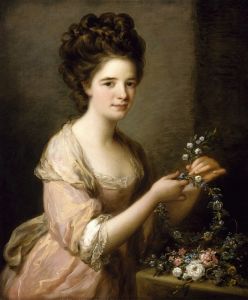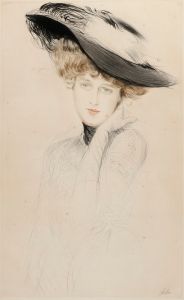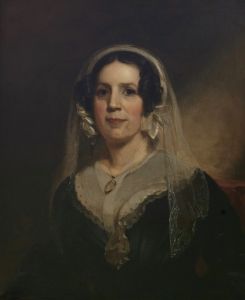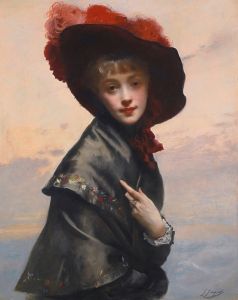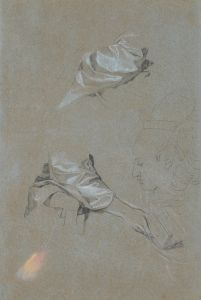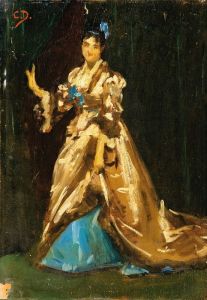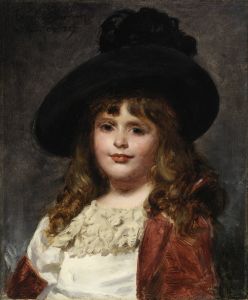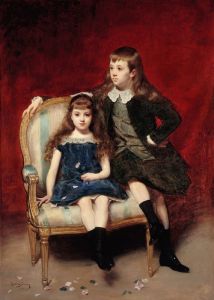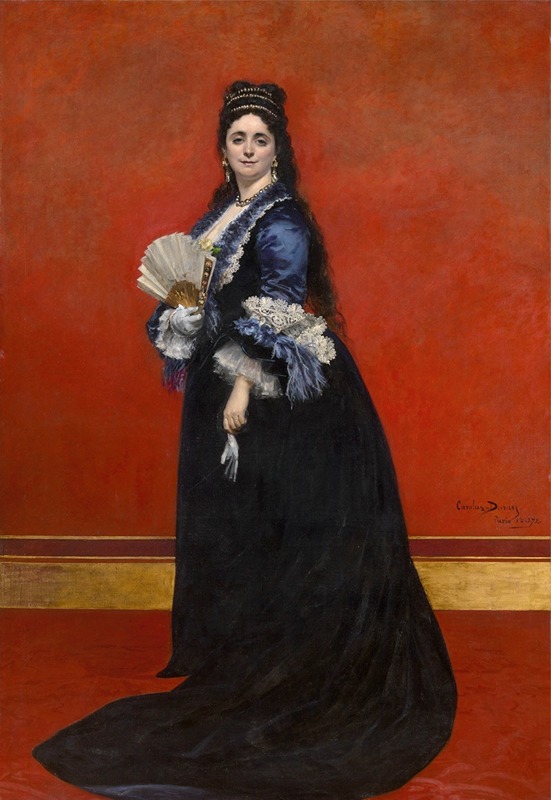
Countess Rattazzi, née Maria-Laetitia Bonaparte-Wyse
A hand-painted replica of Carolus-Duran’s masterpiece Countess Rattazzi, née Maria-Laetitia Bonaparte-Wyse, meticulously crafted by professional artists to capture the true essence of the original. Each piece is created with museum-quality canvas and rare mineral pigments, carefully painted by experienced artists with delicate brushstrokes and rich, layered colors to perfectly recreate the texture of the original artwork. Unlike machine-printed reproductions, this hand-painted version brings the painting to life, infused with the artist’s emotions and skill in every stroke. Whether for personal collection or home decoration, it instantly elevates the artistic atmosphere of any space.
Countess Rattazzi, née Maria-Laetitia Bonaparte-Wyse, is a portrait painted by the renowned French artist Carolus-Duran. This artwork is a significant representation of 19th-century portraiture, showcasing the artist's skill in capturing the elegance and personality of his subjects. Carolus-Duran, whose full name was Charles Auguste Émile Durand, was known for his ability to portray the upper echelons of society with a sense of realism and sophistication, and this painting is no exception.
Maria-Laetitia Bonaparte-Wyse, the subject of the portrait, was a notable figure in her own right. She was born into the Bonaparte family, which was famously connected to Napoleon Bonaparte, the Emperor of France. Her lineage and connections placed her in a prominent social position, which is reflected in the way she is depicted in the painting. The Bonaparte family had a significant influence on European history, and Maria-Laetitia's marriage to Count Rattazzi further cemented her status in high society.
The painting itself is an exquisite example of Carolus-Duran's technique. Known for his use of bold brushwork and a keen eye for detail, Duran was able to capture the countess's poise and grace. The portrait likely emphasizes her refined features and elegant attire, which would have been indicative of her social standing and personal taste. Carolus-Duran was a master of light and shadow, often using these elements to add depth and dimension to his portraits, bringing his subjects to life on the canvas.
Carolus-Duran's reputation as a portrait artist was well-established by the time he painted Countess Rattazzi. He was a prominent figure in the art world, having trained at the Académie des Beaux-Arts in Paris and later becoming a mentor to other artists, including the famous American painter John Singer Sargent. Duran's influence extended beyond his own works, as he played a crucial role in shaping the techniques and styles of future generations of artists.
The portrait of Countess Rattazzi is not only a testament to Carolus-Duran's artistic prowess but also serves as a historical document that offers insight into the fashion, culture, and social dynamics of the time. Portraits like this one were often commissioned by wealthy individuals and families to assert their status and preserve their legacy. As such, they provide valuable information about the people and the era in which they lived.
In summary, Countess Rattazzi, née Maria-Laetitia Bonaparte-Wyse by Carolus-Duran is a distinguished work of art that exemplifies the elegance and sophistication of 19th-century portraiture. Through his masterful technique, Carolus-Duran captured the essence of his subject, offering a glimpse into the life and times of a prominent figure in European society. The painting remains an important piece within the context of art history, reflecting both the personal story of Maria-Laetitia Bonaparte-Wyse and the broader cultural milieu of her time.





